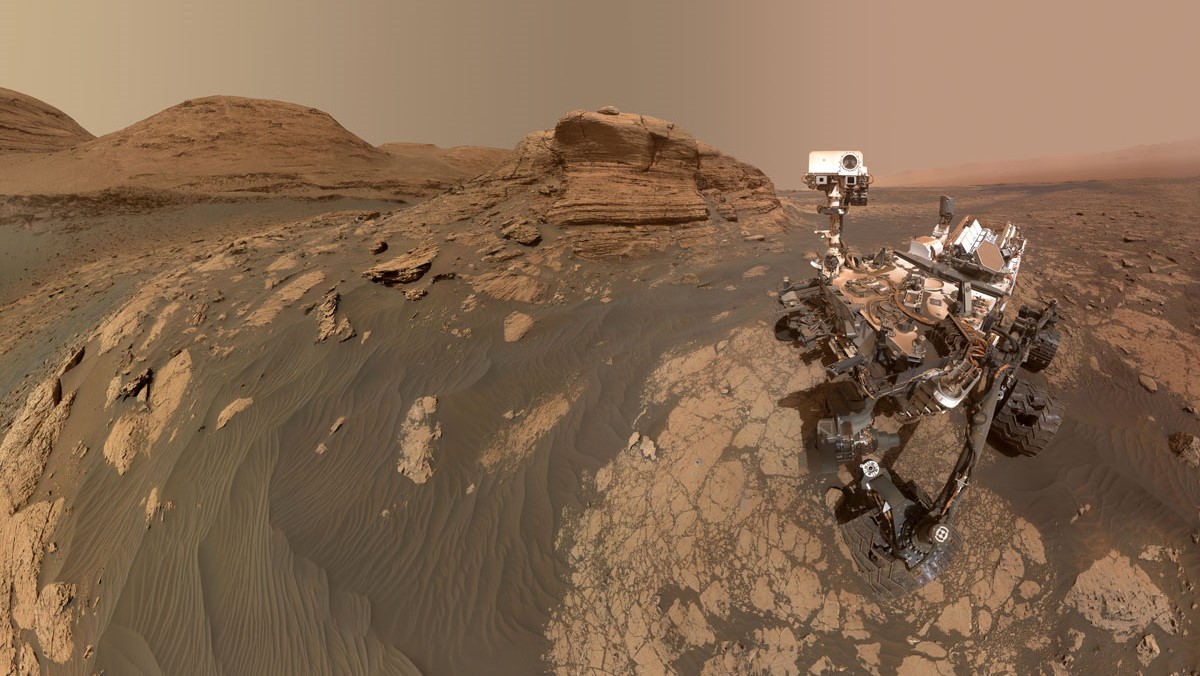How do Mars rocks and riverbeds get their names? NASA explains (video)
Here's the thinking behind Belva Crater, the 'Bacon Strip' and more.
NASA's Mars rovers Curiosity and Perseverance are exploring uncharted territory — which means their mission teams have to come up with lots of names to fill the new maps they're putting together.
Monikers have been supplied for thousands of sizable geological features on Mars, like hills, mountains, dry river beds and craters, as happens here on Earth as well. But NASA scientists also name much more diminutive features on the Red Planet, christening objects from large boulders down to tiny pebbles. Naming a pebble here on Earth would be seen as pretty eccentric behavior, so why do Mars scientists do it? And how are these names chosen?
In a new NASA video, California Institute of Technology (Caltech) geologist Tina Seeger explains the process involved in the naming of Mars rocks, drill targets and other locations the agency's surface missions explore.
"Just like on Earth, geologists on Mars rely on familiar names on a map to understand the landscape and communicate with each other about the rocks seen by the rovers," said Seeger, a doctoral student who's a collaborator on the Curiosity and Perseverance rover missions. "Curiosity and Perseverance are located in different craters more than 2,000 miles [3,200 kilometers] from each other and naming rocks in those craters after places on Earth."
Related: 12 amazing photos from the Perseverance rover's 1st year on Mars

Examples of Martian names
There are two main categories of names given to objects on Mars. Some are given official names, while others receive nicknames. As an example, the Perseverance rover is currently investigating rock outcrops alongside the rim of Belva Crater, a large impact crater within the even larger Jezero Crater.
Belva is named after a town in West Virginia, which in turn is named after Belva Ann Lockwood, an American lawyer who was one of the first women in the U.S. to run for president. Jezero, meanwhile, means "lake" in many Slavic languages.
Get the Space.com Newsletter
Breaking space news, the latest updates on rocket launches, skywatching events and more!
Perseverance's older cousin Curiosity recently drilled a rock sample from a location known as "Ubajara," which is named after a national park in Brazil. While Jezero and Bela are official names, "Ubajara" is a nickname — an unofficial moniker.
"Official names get assigned by the International Astronomical Union, which has strict guidelines for features across the whole solar system. Small craters on Mars must be named after small towns," Seeger pointed out. "Smaller features like rocks, cliffs, meteorites — those get nicknames chosen by the rover teams that are not official, but they do stick."
While this may seem arbitrary, Seeger said it's an improvement over how names were chosen in the past.
"In the '90s, they came up with names on the fly, and that's why you got silly names like 'Barnacle Bill' [and] 'Indiana Jones.' Going back to Pathfinder, a rock looked like the face of Yogi Bear and got the name 'Yogi Rock,'" she said, referring to NASA's Pathfinder lander-rover mission, which landed on Mars in 1997.
"But now we compile a list of names ahead of time based on different themes," she added. "We draw a grid on the map where each square is a different quadrant that represents a different theme."
While the Curiosity team has selected names from South America and Scotland, Perseverance's handlers pick names from national parks around the world.
"Drilled rock samples that Perseverance has dropped for collection also have names like 'Bearwallow," which is named after a hiking trail in Shenandoah National Park," Seeger continued. "One of my favorite Curiosity targets is called 'Bonanza King,' which is named after the Bonanza King Rock formation near Death Valley."
The geologist also highlighted terrain visited by Perseverance that resembles a strip of bacon when viewed from space. It therefore jokingly received the nickname the "Bacon Strip." And she has some ideas of what she would name a Martian rock, should she get the chance.
"I spent seven summers as the Night Skies ranger at Mount Rainier National Park, so I'd probably pick something named after Mount Rainier or a place that's special to me inside the park," Seeger concluded. "Luckily, I got to map the Mount Rainier quadrant in Jezero Crater. So if we drive through it, that dream might become a reality."
Join our Space Forums to keep talking space on the latest missions, night sky and more! And if you have a news tip, correction or comment, let us know at: community@space.com.

Robert Lea is a science journalist in the U.K. whose articles have been published in Physics World, New Scientist, Astronomy Magazine, All About Space, Newsweek and ZME Science. He also writes about science communication for Elsevier and the European Journal of Physics. Rob holds a bachelor of science degree in physics and astronomy from the U.K.’s Open University. Follow him on Twitter @sciencef1rst.









